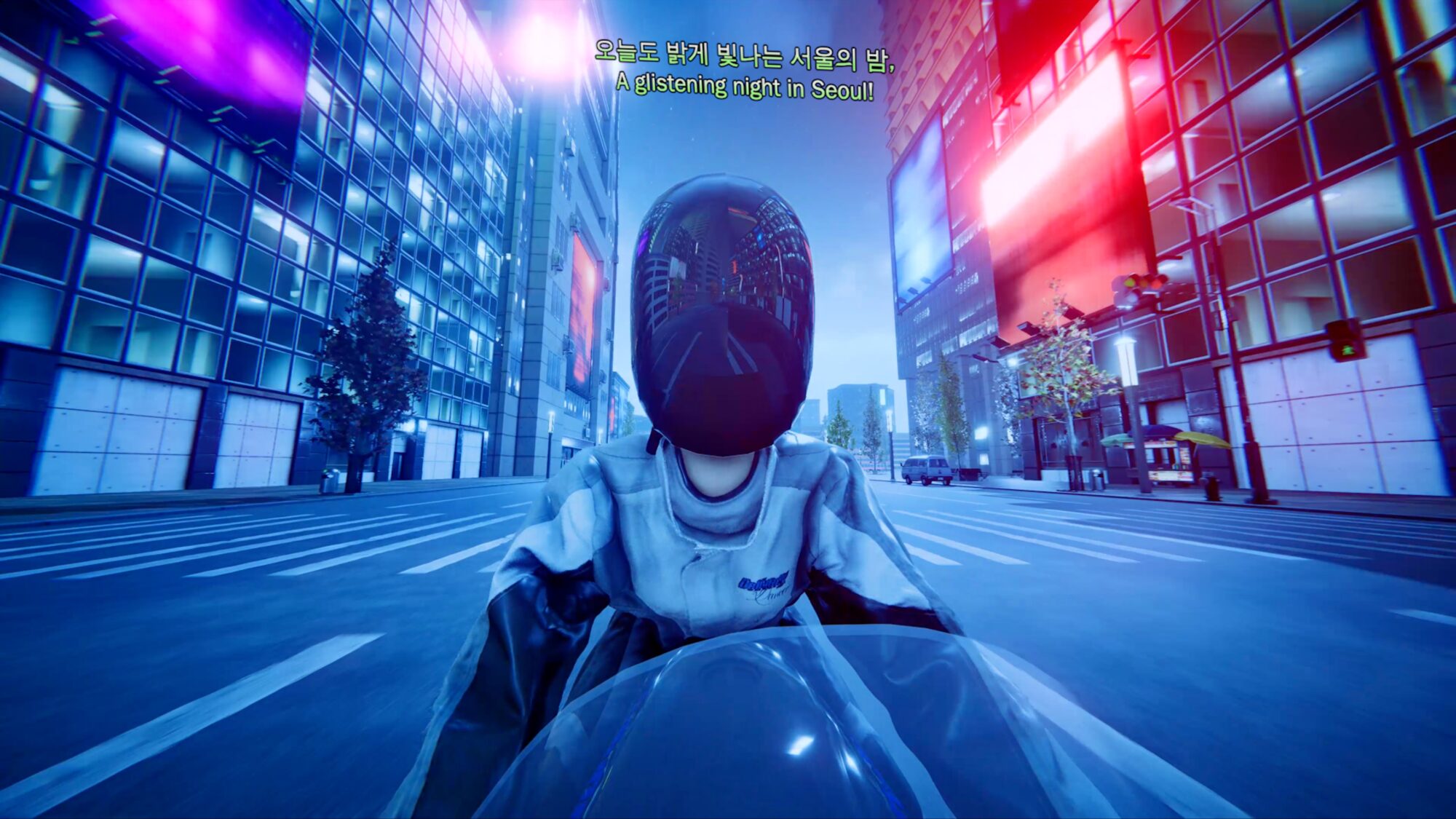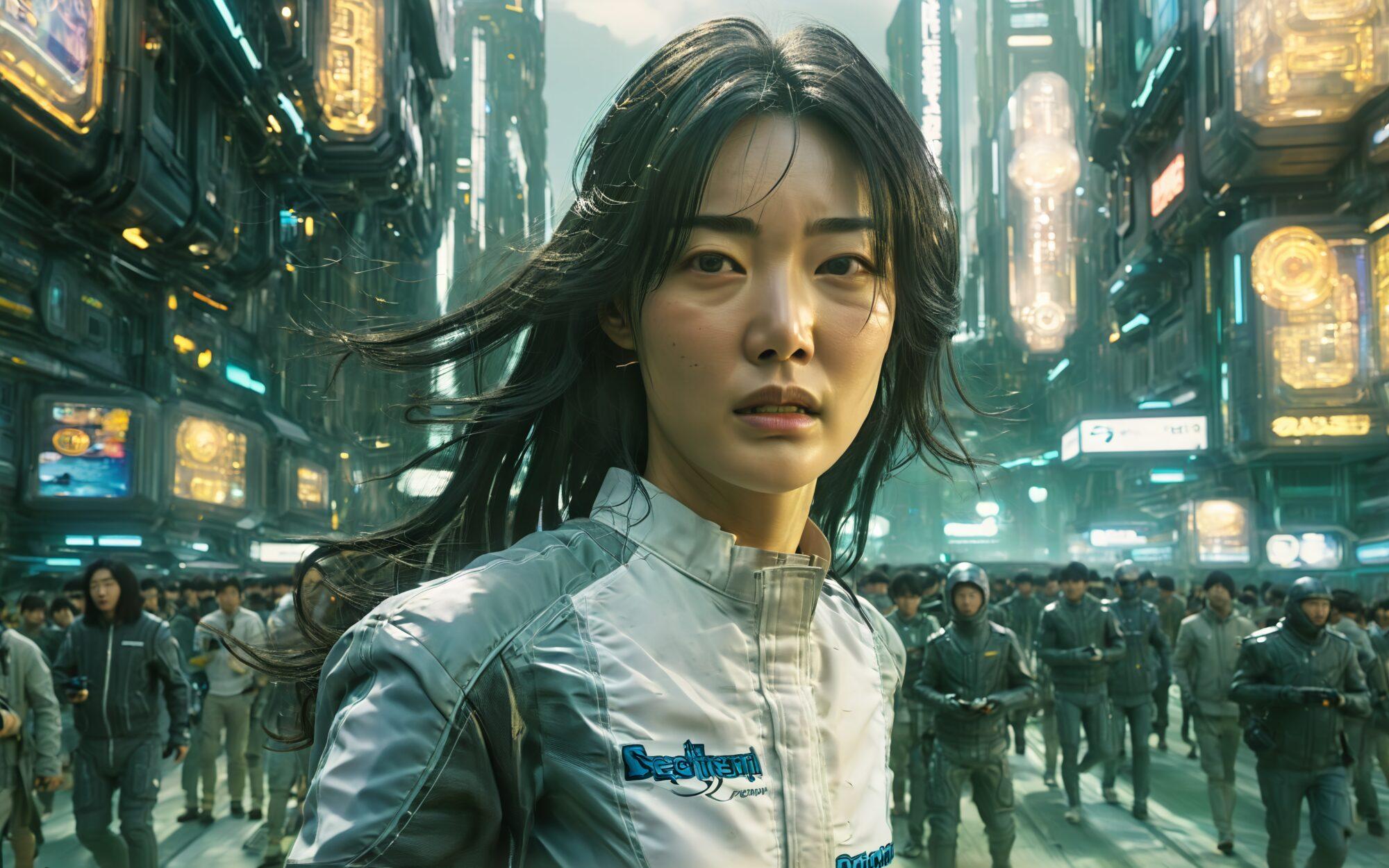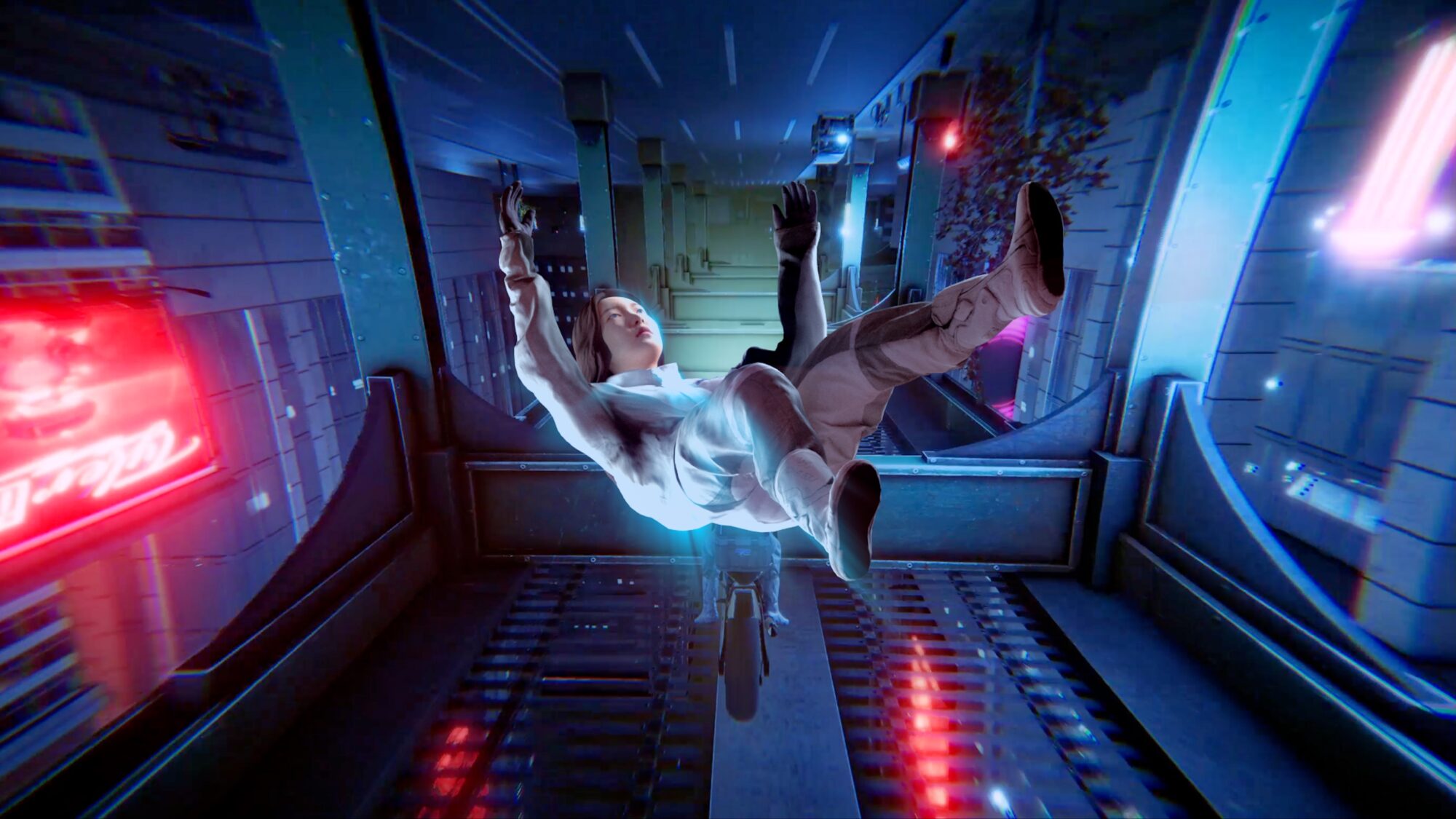In Poor Taste, Ayoung Kim’s Codex Attempts to Legitimize Gen-AI at MoMA PS1


Ayoung Kim: Delivery Dancer Codex marks the first time all three works from Ayoung Kim’s Delivery Dancer trilogy are shown together. The first film in the trilogy, Delivery Dancer’s Sphere (2022) follows Ernst Mo as she encounters her enigmatic dopplegänger En Storm while attempting to complete tasks as a delivery driver in Seoul. In the sequel Delivery Dancer’s Arc: 0° Receiver (2024), Ernst Mo and En Storm become pawns in a futurist multiverse, each tasked with delivering time rather than food. Finally, in Delivery Dancer’s Arc: Inverse (2024), the protagonists are placed in an alternate universe called Novaria, in which they deliver lost artifacts while attempting to outsmart the Timekeepers.
What begins as an intriguing commentary on the gamification of delivery apps and their reliance on exploiting low-paid workers in the gig economy in Delivery Dancer’s Sphere unravels, in the two following films, into a muddled story riddled with clichés that belong in 2010s YA dystopian novels created with sloppy generative AI visuals. At its inaugural showcase at MoMA PS1, the videos are accompanied by sculptural elements such as the protagonists’ phones, uniforms, and the mysterious sundial that governs their timeline. Kim should have paid more attention to the trilogy’s overarching narrative.

There were instances where the storyline felt tight, such as the introduction of the Shadow Definer, which morphs characters into various art styles. I suspect this creative choice was influenced by the Spiderverse series, but its disruptive multiversal presence is visualized through laughably shoddy ripples of gen-AI resemble pedestrian videos of heavily filtered yet well-endowed girls dancing that are common on TikTok. Delivery Dancer’s Arc: Inverse is especially egregious in its use of generative AI, featuring a ridiculous montage of “artifacts” morphing into one another with increasing speed. I couldn’t help but compare the 2024 gaudily sloppy visuals of the AI-generated Novarian city in Delivery Dancer’s Arc: Inverse to her 2022 CGI rendering of Seoul’s winding back alleys in Delivery Dancer’s Sphere. Kim’s artistry was more impressive in the latter, which may be considered “less advanced” in the technological sense, but is certainly more thoughtful in its use of filmmaking techniques and human creativity.

Ironically, Kim’s story, which set out to examine the exploitation of the working class, becomes overshadowed by her own use of generative AI. This choice ultimately undermines the trilogy’s potential to interrogate the complex relationship between art, class, and technology in our present moment—particularly given that the gen-AI industry itself relies on overworked and underpaid laborers and runs on polluting infrastrucure.
This squandered opportunity may be explained by the involvement of Hyundai Card—a company that has invested approximately $700 million USD to enhance its proprietary AI platform, ‘UNIVERSE’—which serves as a financial backer of Kim’s exhibition. Several AI companies are offering artists and art institutions financial and professional incentives to incorporate AI into their work. For instance, in an attempt to pacify complaints regarding ChatGPT and DALL-E’s consistent theft off of artists’ existing works without compensation, OpenAI and Strada Gallery partnered in 2024 to give artists access to then-unreleased AI tools and monetary support to create works that were exhibited in Strada Nuova: New Road at Strada Gallery in New York.
Publicity stunts such as these, carried out by greedy technocrats, have the same effect as putting a Band-Aid on a broken leg; there are still countless people who are being hurt by the continued usage and normalization of generative AI. If we are to heed the adage, “the medium is the message,” rather than using generative AI as a tool to further her own creative vision, Kim was turned into a tool to push for generative AI’s legitimization in the fine art world.
You Might Also Like
A Window into Lu Yang’s Ultimate Creation
Exquisite Imitations and Elaborations of Nature at The Salon Art + Design
What's Your Reaction?
Colleen Dalusong is a curator and writer based in New York City. She is the co-founder of Fruitality Magazine, and has curated exhibits at Think!Chinatown. She will be pursuing her MA in Curatorial Practice at the School of Visual Arts beginning in Fall 2025.

